Much has been written about what goes on in the market free-zone of the southern hemisphere.
The truth in 2015 is that unless the farms have no mortgage, private price contracts with niche companies or no paid staff, Australian producers are as exposed as any other nation’s to low milk prices.
It is hard to generalise on the producer’s position in the world’s third-biggest milk exporting country, because of its size and diversity. The state of Victoria produces 66% of the country’s total milk production (and 86% of the country’s export milk). So it is Victoria that gives the most complete focus to what the bulk of Australia’s dairy farmers face up to every day.
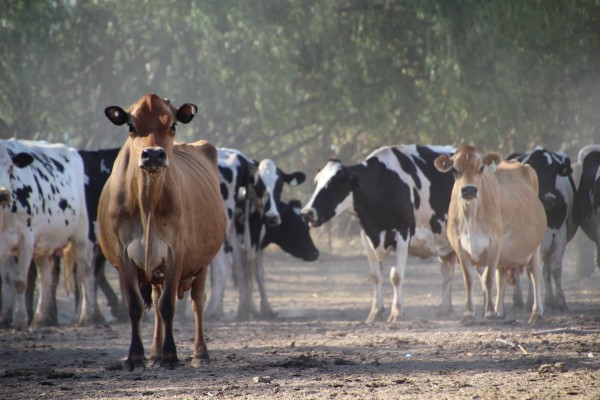
Most Australian dairy herds are challenged by extreme heat at some point of the season. Photo: Sheila Sundborg.
Australia is the driest continent in the world. Its farmers deal with extreme heat in the summer, and water is expensive and often restricted by the government. With heat also comes the risk of fire — and critical management decisions for animal safety and welfare. Floods are also more common that many would expect — both in the tropical parts of the nation and in other areas.
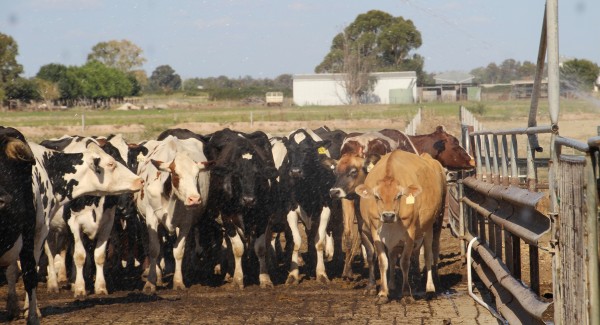
Most herds stand under sprinklers before and after milkings to ease summer temperatures that can reach regularly reach 45 degrees Celsius (113 degrees Fahrenheit). Photo: Sheila Sundborg.
In short, it’s an extreme climate that is home to volatile milk pricing.
And Australia has become a target for foreign investments hunting milk — encouraged by Australia’s Foreign Investment Review Board regulations (FIRB), which are only triggered by the sale of Australian companies whose assets exceed A$231 million (US$176.67).
Canadian milk processor Saputo, spent more than half a billion Aussie dollars (US$382) early last year, to acquire 87.92% of Australia’s oldest surviving dairy company, Warrnambool Cheese & Butter Factory Co Ltd (WCB).
Cynics could argue they were not necessarily buying access to the Asian market (given that Vancouver is closer to Beijing than Warrnambool) and that they were, in fact, perhaps buying access to the world’s cheapest milk.
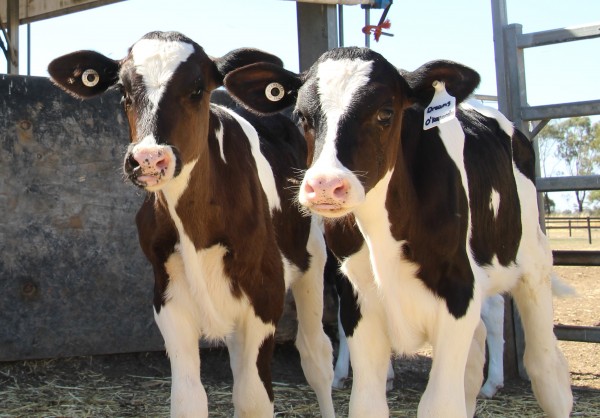
Australia’s genetics are competitive on the world stage, with North American embryo sales now well established. And the world’s best families are represented throughout the country. Here are two Golden Dreams from the Sid daughter of O’Kalibra.
Most processors paying 40-45c/litre
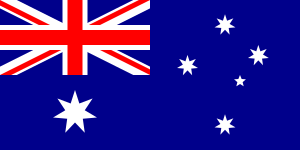
AUSTRALIA
LAND MASS: 7.7 million sq km
POPULATION: 22 million
IN PERSPECTIVE: Australia is the planet’s sixth largest country after Russia, Canada, China, the USA and Brazil. It is the world’s largest island and the only one of the largest six nations that is completely surrounded by water. Roughly 20% is desert so it’s hardly surprising that it’s the world’s driest continent.
MILK PRODUCTION: 9.2 billion litres of milk
Most of the major milk processors in Victoria are currently paying around 40-45 Aussie cents a litre (0.31-0.34 US cents), which is the cost of production per litre on most farms — without factoring in a return on investment.
Players pulling the strings include the milk processors and two supermarkets, Coles and Woolworths, who between them have a 72.5% market share of Australia’s grocery sector. None seem too interested in the farmers’ financial struggles.
A milk processor can change the game in the blink of an eye – as Parmalat did at the start of February.
Without warning, it sent an email stripping 23 cents/kgMS (kilogram of milk solids), that’s 18 US cents, off some of its suppliers, leaving mid-season prices at A$6.09, or 47c/litre (US$4.66, US$0.36). And it closed its door to step-ups — which are price rise opportunities — for the rest of the year.
However, it didn’t touch the price for many of its New South Wales suppliers. The price inequality between states and regions (at the discretion of the processers) has long been a bone of contention for producers, regardless of whether milk is being used for manufacturing (export) or for the fresh milk market.
And sadly, sudden price cuts have become routine.
One of Parmalat’s producers, Lloyd and Cathy Chesworth, of Willette Holsteins, said the decision would cost them A$90,000 (US$68,830) this season on a 700-cow herd producing seven million litres.
Lloyd, 66, said, “We had all but ordered an activity system for the cows [to monitor heat and herd health]. As soon as we read that email, we changed our mind.
“When you lose $90,000 in a season without doing anything wrong, it knocks the system. The Australia dollar is down 30% compared to last year and world milk prices are down too. It’s doesn’t make sense, and I think they’re being opportunistic at our expense.”
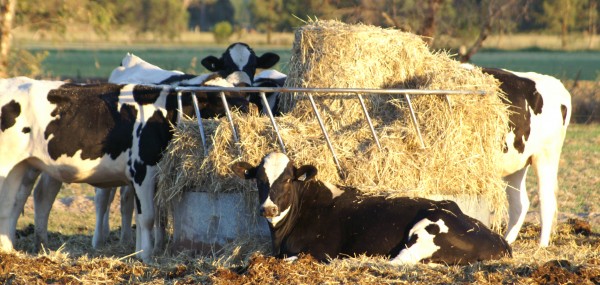
In summer, much of Australia has no pasture in the wake of tougher water restrictions.
Numbers horrify
Nutritionist and dairy farmer Andrew “Ange” Angelino, of the Dairy Business Centre, agrees. He has been heavily involved in the industry for more than two decades. He advises many of the best operators in the country, and has deep and credible knowledge of the costs and the margins in both Australia and New Zealand.
“The supermarkets are screwing us without any doubt, and the government is not stepping up to stop it.” – Andrew “Ange” Angelino.
He also operates Kentgrove South, a dairy farm at Mt Schank in South Australia, which this season will milk 700 cows — down from 850 because of low milk prices. In addition, he also owns shares in other dairy farms that milk, in total, about 2200 cows.
He paints an ugly picture of Australia’s future dairy industry unless things change. He says rising core costs on-farm — coupled with milk prices that can drop harder and faster than aeroplanes in heavy turbulence — are taking their toll on this generation, and scarring the next.
Ange says producers need higher and more reliable margins against what nature throws at them, and, more importantly, to encourage their children to get involved.
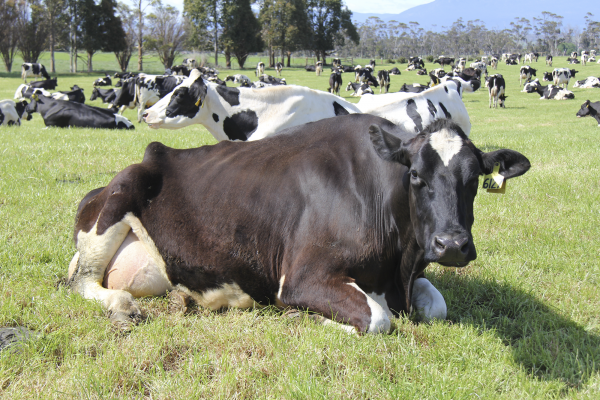
Tasmania is Australia’s most natural milk-making climate; it’s separated from mainland Australia by 240km of sea.
No happy farmers

NEW ZEALAND
SIZE: 268,680 sq km
POPULATION: 4 million
IN PERSPECTIVE: New Zealand is the size of Colorado. New Zealand’s two main components are the North Island and the South Island, separated by Cook Strait. For a small country, it packs a punch. It’s the world’s biggest producer of dairy products, aided by its near-perfect climate for dairy farming.
MILK PRODUCTION: 20.7 billion litres of milk
I can’t sit here and say I know a happy farmer in Australia at the moment,” he said. “Why is it food around the world is a similar price, if not cheaper than in Australia, but the gap between the price of food in Australia and its farmers is bigger? What is happening to our margin.
“The supermarkets are screwing us without any doubt, and the government is not stepping up to stop it. We were supposed to be flying high when more than 50% of our milk production was being used domestically. It’s now at 60% and we’re still done over.”
“Australians have to feed 3.5kg of grain a day, just to get the same value out of their grass as a Kiwi [New Zealand] farmer feeding no grain.” – Andrew “Ange” Angelino
Ange said in the past five years, his farm’s power bill had lifted from A$70,000 (US$53,535) a year to A$220,000 (US$168,255) — backed down to A$160,000 (US$122,370) after a forthright “chat” with the power company. The hourly rate of contractors used for specialist repairs and maintenance had lifted from A$50/hour (US$38) to A$120/hour (US$92/hr) in some cases.
“They charge like doctors, and may as well arrive in an ambulance when you factor in their travelling,” he quipped.
He said staff costs were also debilitating.
“In Australia we battle to get anyone to work for less than A$50,000 to A$60,000 [US$38,240-$45,890], and you often have to follow them around all day because they don’t know what they’re doing,” Ange said.
“We hear about all these seminars about how to farm more efficiently or how to cut costs. We’ve done all that for years. We are among the most efficient producers in the world now — how about we have a conference about revenue raising?”
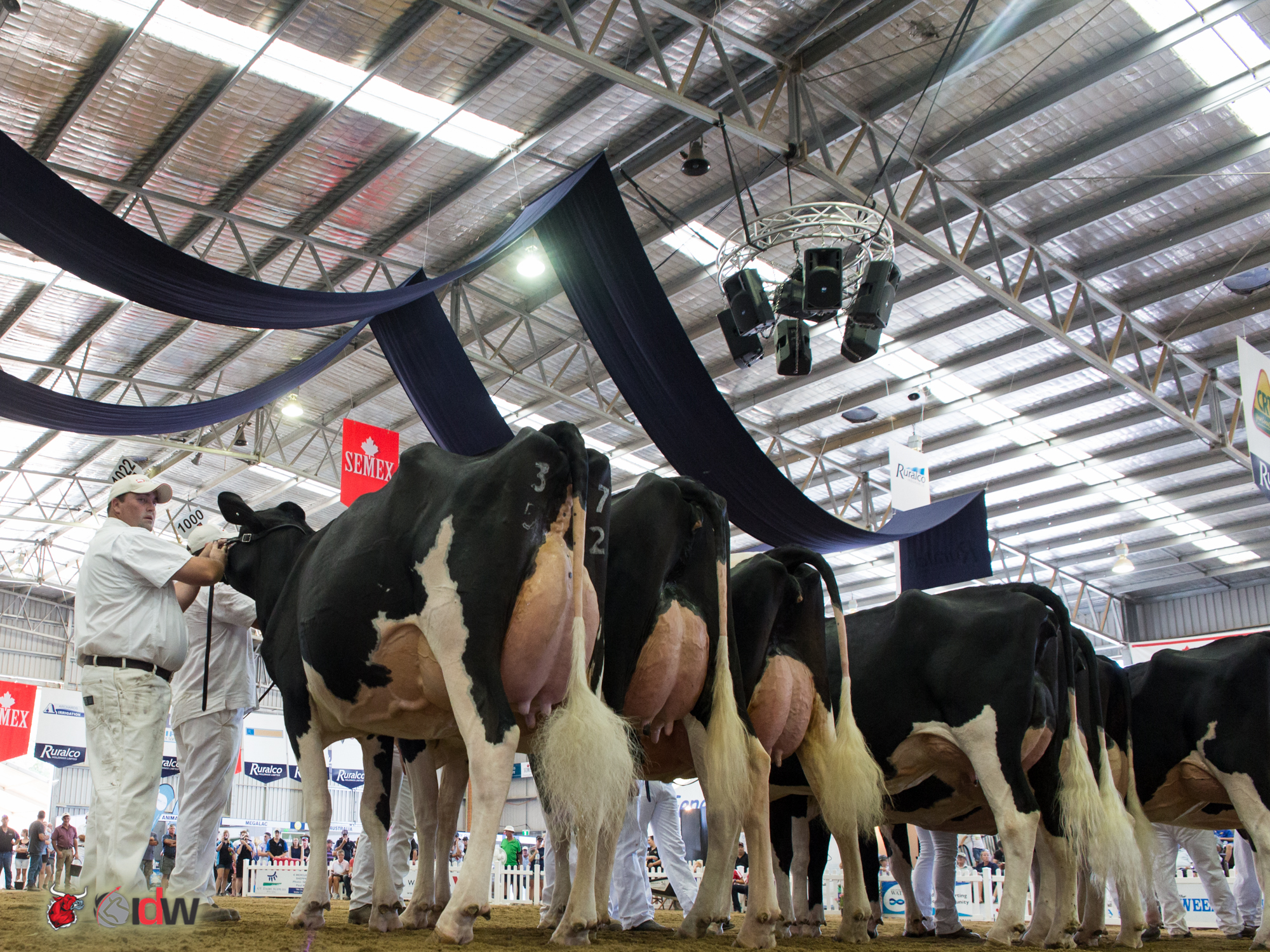
Australia’s National Holstein Show (International Dairy Week) held each January is the largest dairy show in the Southern Hemisphere. (See 2015 Results here)
Australia and NZ trail the world on payday
Ange said he wasn’t surprised that Australian and NZ producers are also at the wrong end of the deal when he lined up global farm-gate milk prices on an independent website.
Australia is routinely 30-40% behind its EU and US counterparts. Farmers in China are paid 2.5 times more, and Canadians receive almost double Australia’s price for their milk.
“And what really annoyed me about that, was that the prices were factored last year when NZ was paid the highest prices it had ever seen,” Ange said. “And they were still three Euro cents a litre behind the EU. And once you convert that through the exchange rate, they were six to seven cents a litre behind the EU. Again, that’s on the back of the best price New Zealand had ever seen.”
Ange says generally Australia has the world’s cheapest milk and the core (daily) running costs of pasture-based farmers he assessed eight years ago were A$1250 (US$956) a cow. It meant that they were covering their costs once the cows produced 4000 litres/cow (on a 32c/litre payment, which is US$0.24).
A re-assessment of those numbers in today’s market reveals that core costs have risen to $1800-$2000 (US$1375-$1530) a cow. So, to cover the costs (on pasture) at 4000 litres per cow, producers now needed 46 cents a litre (US$0.35), just to achieve par.
“And in the last eight years, farmers have seen 46 cents a litre just once. How do you think everyone went at 36 cents [US$0.28] two years ago?” he asked rhetorically.
Australian farmers have access to much cheaper land than in NZ. But NZ’s dairy producers do not have to compete against mining for its government’s attention. Consequently, it also enjoys markedly more respect as an industry. It also has the power to slow the country if its farmers are not spending.
Searching for the positives, Ange dug deep. The best he could find was that Australia was “a nice spot to live”, and that milk was mostly produced from pasture, and therefore the protein in the ration for the southern hemisphere was relatively cheap.
“If cows can get most of their protein from grass, their producers are a long way ahead of the game. And one day the world will wake up and realise that pasture-based farming does produce a better product … but that’s another story for another day.
“NZ can do that even better because their climate and grass quality is also better. In the TMR [total mixed ration] world, high-production herd rations are generally corn based, which has no protein. So there is subsequently a high requirement for protein and usually they have to feed 7-8kg soya bean meal to keep the ration in balance.
“Imagine if soya bean meal when to $600-$700/tonne [US$460-$535]. It is almost undoable financially. We [Australia] have to be careful not to over-complicate our ration to the point we are that reliant on buying protein.”
China buying up
Ange said increasing sales of Australia’s agricultural land to Chinese buyers did not bother him.
“I hope they [China] buy it all. Many Australians don’t care. The government doesn’t care — why should we? It would be good if the gap between domestic and export was swallowed up, because then we would have more power against the supermarkets, as they do in NZ, and they would have to negotiate with us.
“Wouldn’t it be nice to tell Mr Supermarket, ‘you can go and buy milk powder from China and bring it back here [Australia] and add chlorinated water to it and try and sell it as fresh milk’, because that’s all generic $1/litre [US$0.76] of milk should be. Ask British farmers how they feel at the moment?”
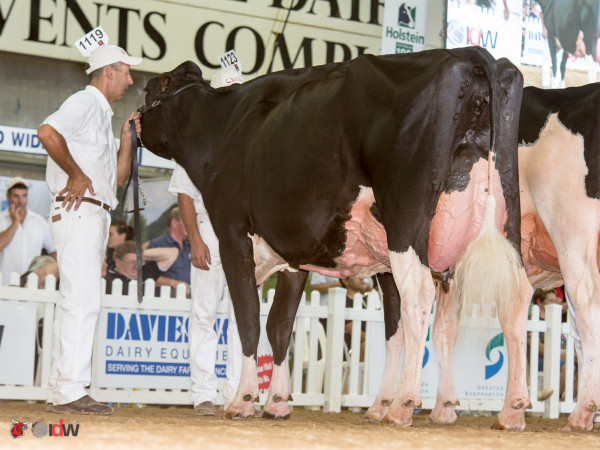
Some of Australia’s top show cattle could easily compete at the worlds largest shows like World Dairy Expo in the US or The Royal in Canada.
World needs quota
Ange’s summation cuts to the core of what Canada faces right now.
“The whole world needs some sort of quota in my opinion,” he said.
“The world needs more milk, we can do it, but we need to get paid for it. I believe we need more control over supply and demand for this type of industry.
“I look at Canada and at 82 cents [A$0.86] a litre (to the farmer) the Canadian consumer doesn’t complain. They know they have a farmer making money and the town he supports is making money. I’m not sure if Coles and Woolworths have taken over every town in Canada, but weren’t regional centres good when everyone went to the butcher for their meat, the baker for their bread and the pub for their beer?
“That’s when towns were vibrant. I drove through Girgarre and Stanhope on the way to Rochester [in northern Victoria] recently and it was a wake-up call to see the buildings that were shut and the general lack of energy in the community.
“These towns are all located in the heart of Australia’s dairying country and they are struggling. These towns were hit hard by prolonged drought and water restrictions, but there’s more going on now.”
Get original “Bullvine” content sent straight to your email inbox for free.

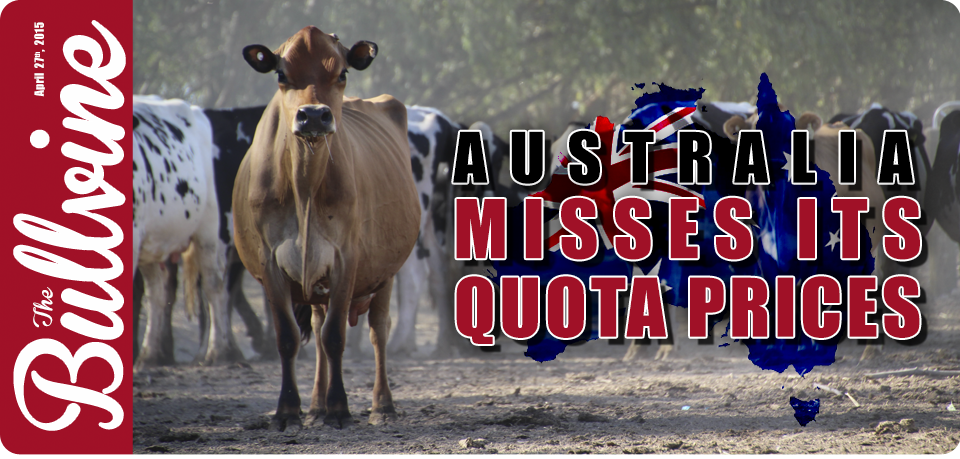















Leave a Reply
You must be logged in to post a comment.